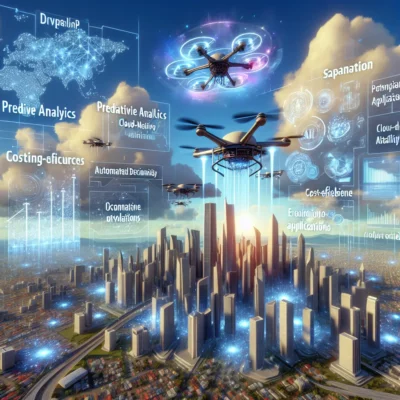The Promise of AI and Machine Learning in the Cloud
Artificial Intelligence (AI) and Machine Learning (ML) have revolutionized how businesses operate, offering unprecedented capabilities when integrated with cloud computing. Here are some of the key promises of AI and ML in the cloud:
- Enhanced Functionality: AI and ML APIs can add advanced features to applications, such as predictive analytics, natural language processing (NLP), and automated decision-making. For instance, predictive analytics can help businesses forecast trends and make data-driven decisions, while NLP can enable more intuitive user interactions through chatbots and virtual assistants.
- Scalability and Flexibility: Cloud-native applications can scale AI and ML capabilities seamlessly. Whether a business needs to process large datasets or run complex algorithms, cloud platforms offer the necessary infrastructure to scale up or down based on demand. This flexibility ensures that businesses can handle varying workloads without investing in expensive hardware.
- Cost Efficiency: The cloud’s pay-as-you-go model allows businesses to optimize resource utilization and reduce costs. By leveraging cloud services, companies can avoid the upfront costs of setting up and maintaining on-premises infrastructure, paying only for the resources they use.
Real-World Applications
AI and ML in the cloud are not just theoretical concepts; they are being applied across various industries to drive tangible benefits:
- Customer Experience: AI-driven chatbots, personalized recommendations, and sentiment analysis are transforming customer interactions. For example, e-commerce platforms use ML algorithms to provide personalized product recommendations, enhancing user experience and driving sales.
- Operational Efficiency: AI and ML are being used for predictive maintenance, supply chain optimization, and automated workflows. Predictive maintenance can help companies anticipate equipment failures and schedule timely repairs, reducing downtime and maintenance costs.
- Innovation and Competitive Advantage: Businesses are leveraging AI and ML to innovate and stay ahead in their industries. For instance, financial institutions use AI for fraud detection and risk management, while healthcare providers use ML for diagnostic imaging and personalized treatment plans.
Navigating the Risks
While the benefits of AI and ML in the cloud are significant, there are also risks that need to be managed:
- Data Privacy and Security: Concerns around data breaches, compliance with regulations, and ensuring data integrity are paramount. Businesses must implement robust security measures and adhere to regulations such as GDPR and CCPA to protect sensitive data.
- Algorithmic Bias: Biased algorithms can lead to unfair outcomes, making it crucial to ensure fairness and transparency in AI systems. Companies should regularly audit their models for bias and implement measures to mitigate any identified issues.
- Dependency on Cloud Providers: Relying heavily on a single cloud provider can lead to vendor lock-in and potential service outages. Businesses should consider multi-cloud strategies and have contingency plans in place to mitigate these risks.
Best Practices for Integration
To maximize the benefits and minimize the risks of AI and ML in the cloud, businesses should follow these best practices:
- Robust Data Management: Ensuring data quality, governance, and secure data pipelines is essential. Implementing data validation processes and using encryption can help maintain data integrity and security.
- Continuous Monitoring and Evaluation: Regularly monitoring AI/ML models for performance, accuracy, and ethical considerations is crucial. This includes tracking model drift and retraining models as needed to maintain their effectiveness.
- Collaborative Development: Encouraging cross-functional teams to work together can lead to more effective integration and innovation. Combining the expertise of data scientists, engineers, and domain experts can result in more robust and impactful AI solutions.
Future Trends and Opportunities
The landscape of AI and ML in the cloud is continually evolving, with several exciting trends and opportunities on the horizon:
- Edge AI: Integrating AI and ML at the edge can enable real-time processing and reduced latency. This is particularly beneficial for applications that require immediate responses, such as autonomous vehicles and industrial IoT.
- AI-Driven Automation: The future of autonomous systems and decision-making processes looks promising. AI-driven automation can streamline operations, reduce human error, and improve efficiency across various sectors.
- Evolving Ecosystem: The growth of AI and ML tools, frameworks, and platforms in the cloud-native landscape is accelerating. Innovations in this space are making it easier for businesses to develop, deploy, and manage AI solutions, driving further adoption and advancement.
As AI and ML continue to mature, their integration with cloud computing will unlock new possibilities and reshape industries. By understanding the promises, navigating the risks, and following best practices, businesses can harness the full potential of AI and ML in the cloud.



